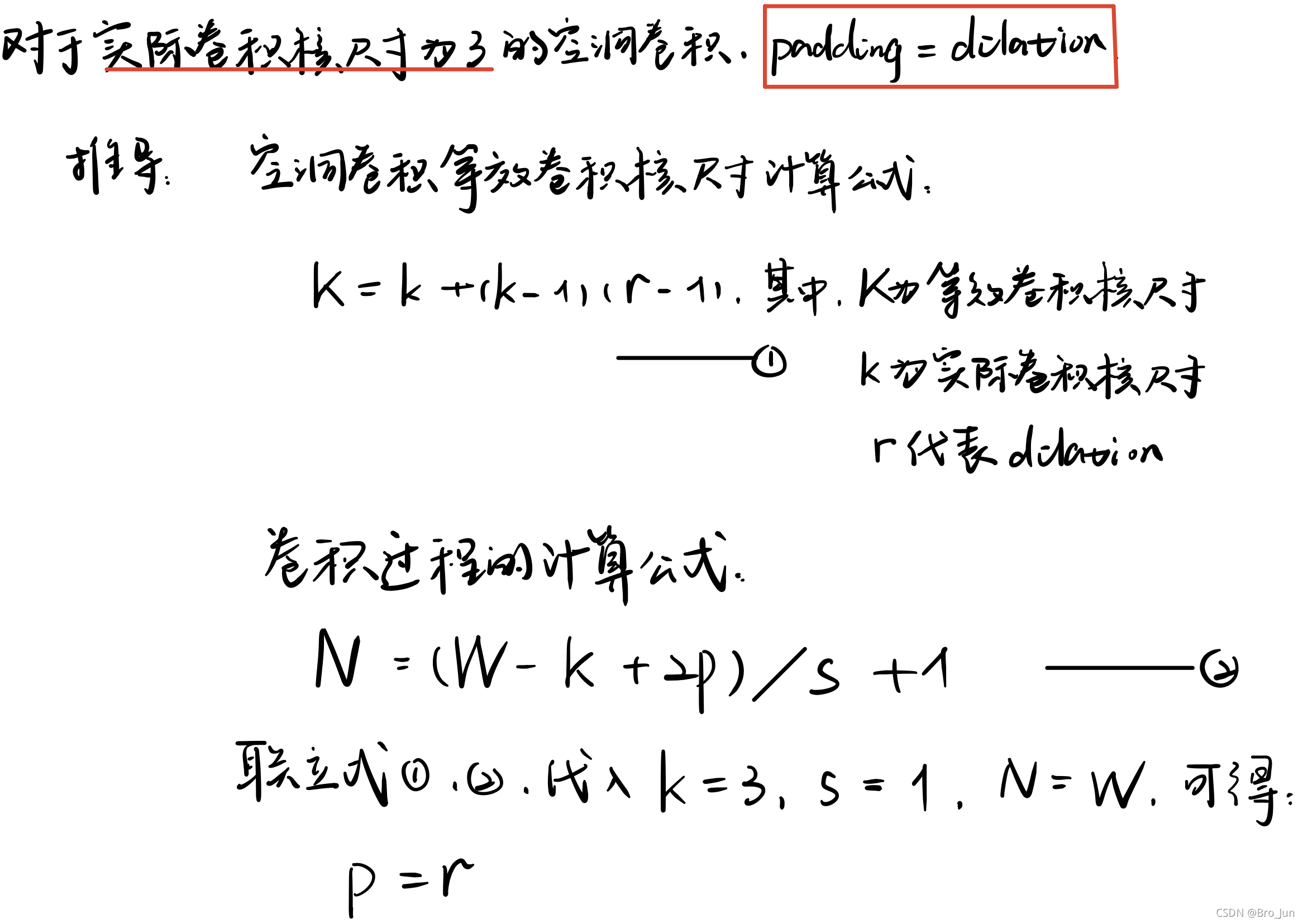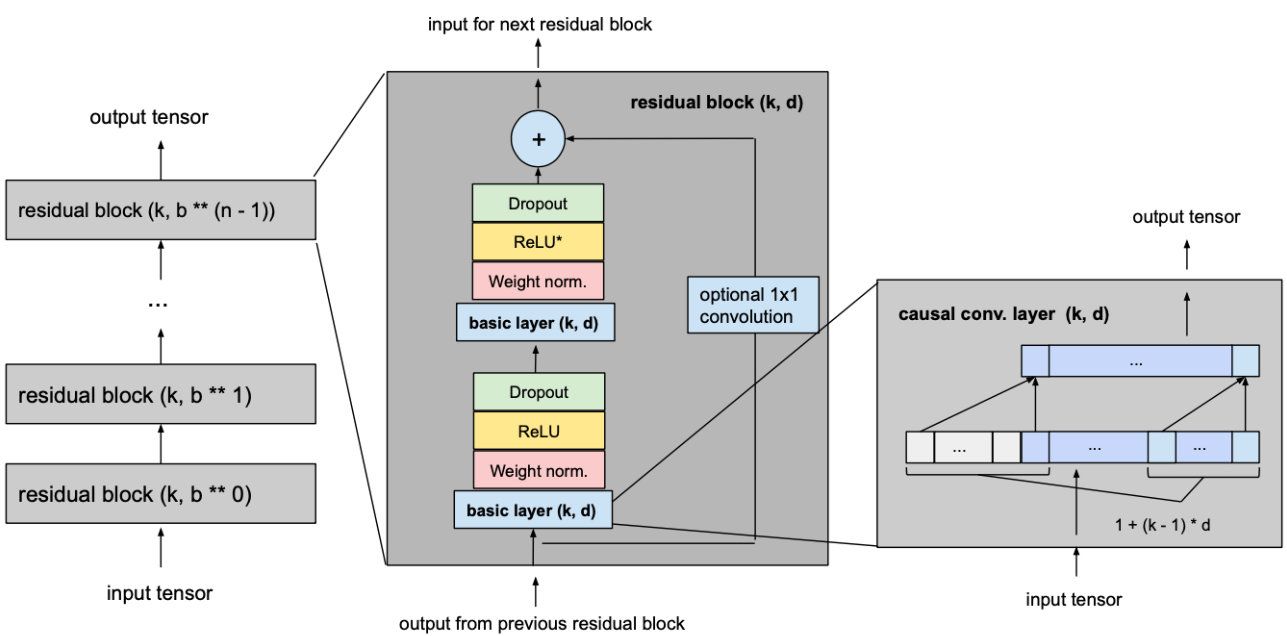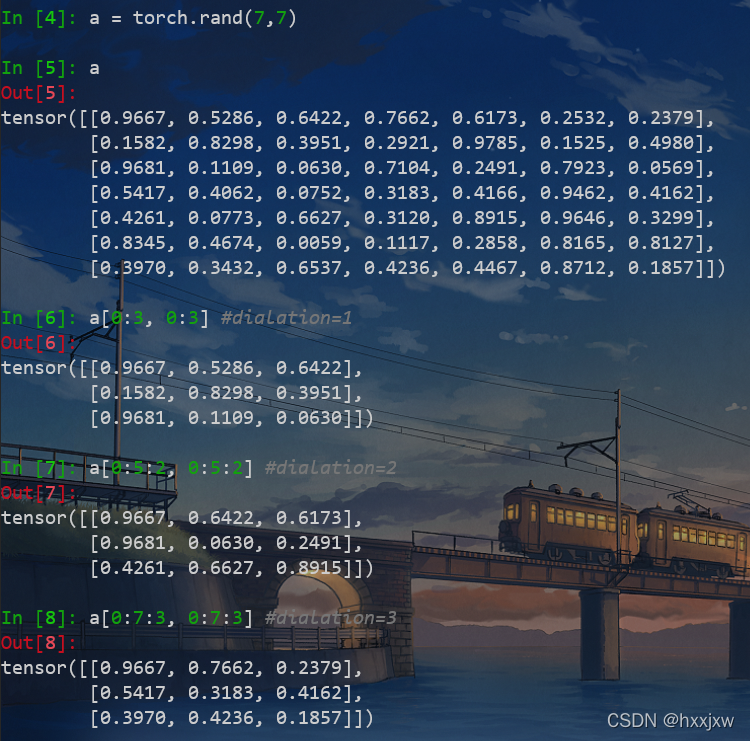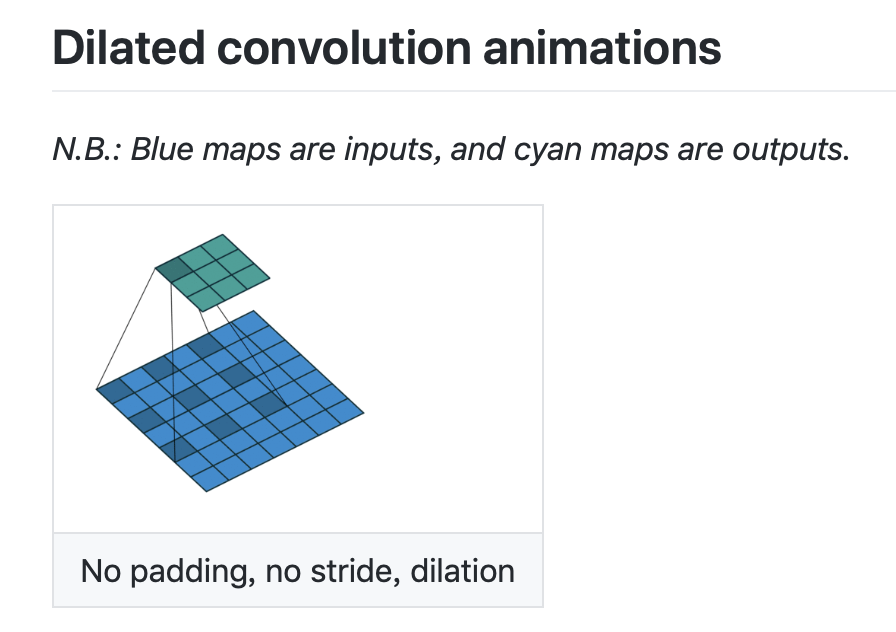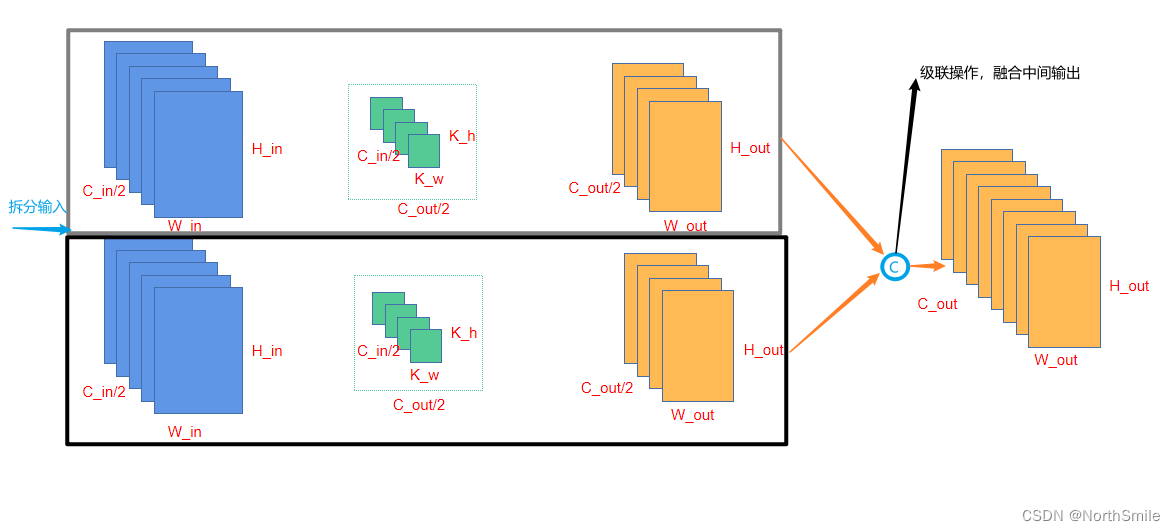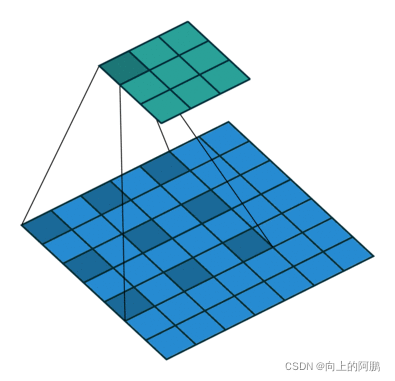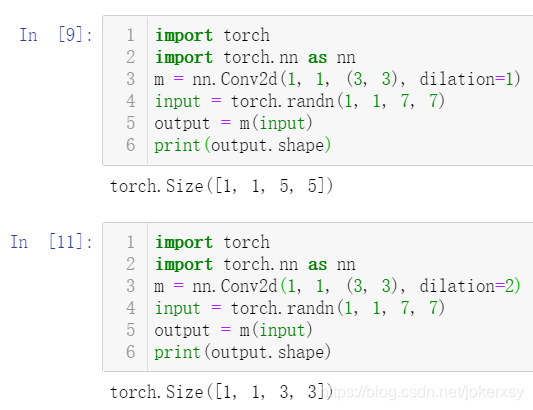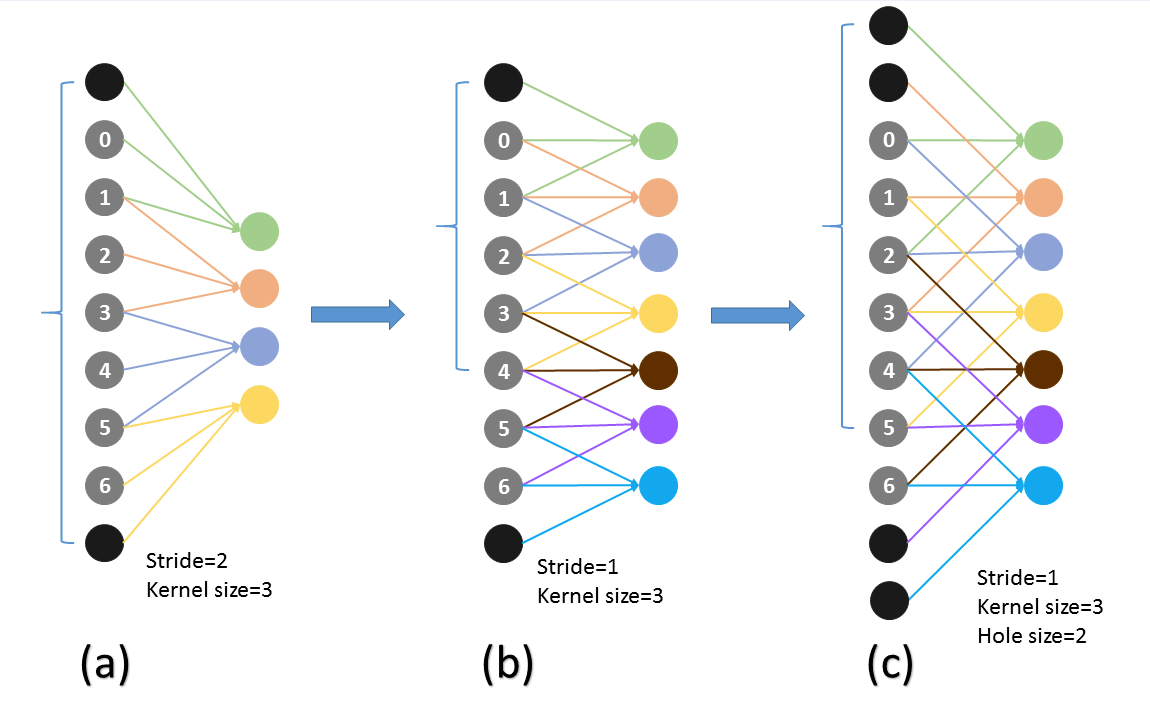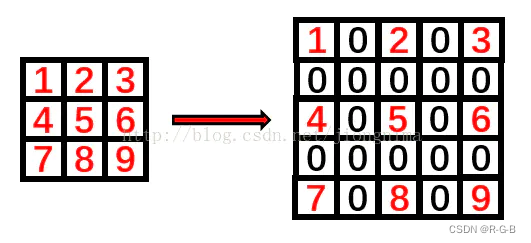博主欢迎转载,但请一定要给出原文链接,标注出处!!!谢谢~
pytorch之nn.Conv1d详解
(没想到当初整理这篇,竟然有那么多人看,而且还有不少人提问。由于CSDN不常登陆,所以评论不一定及时回复。大家如果用知乎的话,可以知乎私信我:Sunny.夏的知乎个人主页。我看到消息肯定会及时回复大家的。对于那些评论了几个月博主都没回的,实在抱歉,千万别拿大刀砍我。。。我是真的不常登,只有在写文章的时候才会登下博客)
之前学习pytorch用于文本分类的时候,用到了一维卷积,花了点时间了解其中的原理,看网上也没有详细解释的博客,所以就记录一下。
Conv1d
class torch.nn.Conv1d(in_channels, out_channels, kernel_size, stride=1, padding=0, dilation=1, groups=1, bias=True)
- in_channels(
int) – 输入信号的通道。在文本分类中,即为词向量的维度 - out_channels(
int) – 卷积产生的通道。有多少个out_channels,就需要多少个1维卷积 - kernel_size(
intortuple) - 卷积核的尺寸,卷积核的大小为(k,),第二个维度是由in_channels来决定的,所以实际上卷积大小为kernel_size*in_channels - stride(
intortuple,optional) - 卷积步长 - padding (
intortuple,optional)- 输入的每一条边补充0的层数 - dilation(
intortuple, `optional``) – 卷积核元素之间的间距 - groups(
int,optional) – 从输入通道到输出通道的阻塞连接数 - bias(
bool,optional) - 如果bias=True,添加偏置
举个例子:
conv1 = nn.Conv1d(in_channels=256,out_channels=100,kernel_size=2)
input = torch.randn(32,35,256)
# batch_size x text_len x embedding_size -> batch_size x embedding_size x text_len
input = input.permute(0,2,1)
out = conv1(input)
print(out.size())
这里32为batch_size,35为句子最大长度,256为词向量
再输入一维卷积的时候,需要将32*35*256变换为32*256*35,因为一维卷积是在最后维度上扫的,最后out的大小即为:32*100*(35-2+1)=32*100*34
附上一张图,可以很直观的理解一维卷积是如何用的:
图片来源:Keras之文本分类实现
图中输入的词向量维度为5,输入大小为7*5,一维卷积核的大小为2、3、4,每个都有两个,总共6个特征。
对于k=4,见图中红色的大矩阵,卷积核大小为4*5,步长为1。这里是针对输入从上到下扫一遍,输出的向量大小为((7-4)/1+1)*1=4*1,最后经过一个卷积核大小为4的max_pooling,变成1个值。最后获得6个值,进行拼接,在经过一个全连接层,输出2个类别的概率。
附上一个代码来详解:
其中,embedding_size=256, feature_size=100, window_sizes=[3,4,5,6], max_text_len=35
class TextCNN(nn.Module):def __init__(self, config):super(TextCNN, self).__init__()self.is_training = Trueself.dropout_rate = config.dropout_rateself.num_class = config.num_classself.use_element = config.use_elementself.config = configself.embedding = nn.Embedding(num_embeddings=config.vocab_size, embedding_dim=config.embedding_size)self.convs = nn.ModuleList([nn.Sequential(nn.Conv1d(in_channels=config.embedding_size, out_channels=config.feature_size, kernel_size=h),
# nn.BatchNorm1d(num_features=config.feature_size), nn.ReLU(),nn.MaxPool1d(kernel_size=config.max_text_len-h+1))for h in config.window_sizes])self.fc = nn.Linear(in_features=config.feature_size*len(config.window_sizes),out_features=config.num_class)if os.path.exists(config.embedding_path) and config.is_training and config.is_pretrain:print("Loading pretrain embedding...")self.embedding.weight.data.copy_(torch.from_numpy(np.load(config.embedding_path))) def forward(self, x):embed_x = self.embedding(x)#print('embed size 1',embed_x.size()) # 32*35*256
# batch_size x text_len x embedding_size -> batch_size x embedding_size x text_lenembed_x = embed_x.permute(0, 2, 1)#print('embed size 2',embed_x.size()) # 32*256*35out = [conv(embed_x) for conv in self.convs] #out[i]:batch_size x feature_size*1#for o in out:# print('o',o.size()) # 32*100*1out = torch.cat(out, dim=1) # 对应第二个维度(行)拼接起来,比如说5*2*1,5*3*1的拼接变成5*5*1#print(out.size(1)) # 32*400*1out = out.view(-1, out.size(1)) #print(out.size()) # 32*400 if not self.use_element:out = F.dropout(input=out, p=self.dropout_rate)out = self.fc(out)return outembed_x一开始大小为32*35*256,32为batch_size。经过permute,变为32*256*35,输入到自定义的网络后,out中的每一个元素,大小为32*100*1,共有4个元素。在dim=1维度上进行拼接后,变为32*400*1,在经过view,变为32*400,最后通过400*num_class大小的全连接矩阵,变为32*2。

